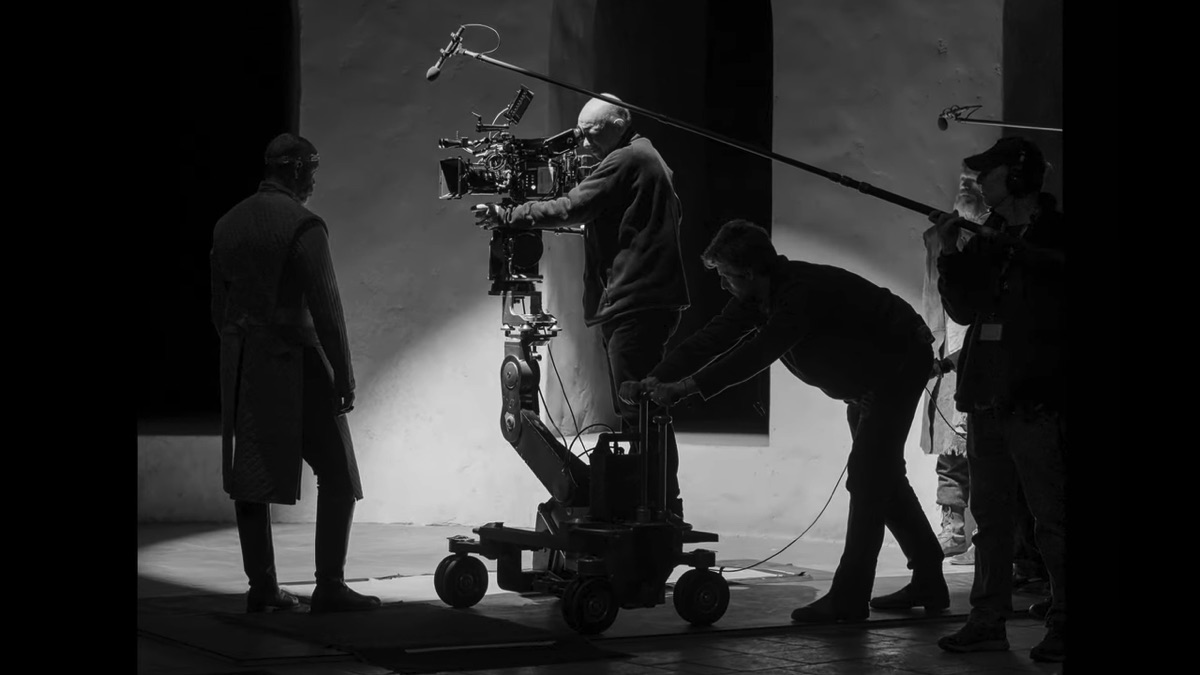east side effects breaks down the invisible visual effects in the Joel Coen film.
In this frank interview, east side effects founders Michael Huber and Alex Lemke discuss their visual effects supervisor roles on Joel Coen’s The Tragedy of Macbeth. The film, presented in black and white and in a 1:37:1 aspect ratio, intentionally looks and feels much like a stage play rendition of the Shakespeare work.
Helping to make that possible with many set extensions, organic and architectural environment augmentations, and CG ravens, was around 400 visual effects shots overseen by Huber and Lemke. They tell befores & afters how it was done.
b&a: Nobody, I think, would really consider this as a visual effects film, but your work of course is so crucial to the way that the film plays out, the design, the staging. Tell me about some of the very early conversations you might have had with Joel, and anyone else on the production, about how visual effects would be part of this film?
Alex Lemke: I think our first meeting with Joel was April 2019. Joel said, ‘I want to do Macbeth, and my plan is to not hide the fact that it’s a stage play, but actually play that really prominently.’ I think the early conversations were, we talked about the ravens. We talked about the witches idea with the reflection in the pool and a lot about environments and fog, and transitions were also a part of it.
Michael Huber: We talked a lot about the opening scene with the birds circling in the sky. That was fairly early, and the witches, too.
Alex Lemke: The next time we met was in September that year. By that time, the DOP Bruno Delbonnel and Joel had collected a lot more visual reference.
Michael Huber: They had an online look book, which was a collection of images that would reference lighting styles and geometric shapes, architectural stuff. And they were just throwing things into that folder so we could take a look and get an idea of where they were heading with this, while they were developing the style of it.
b&a: I assume the film still followed the general approach of you being on set and contributing to visual effects in that way?
Michael Huber: Yes, we were there the whole time until they shut us down because of COVID. So we were there from mid-January 2020 until mid-March.
Alex Lemke: Sometimes on films like this, you are brought in as the visual effects team just for the days where they actually have visual effects. And we said, ‘We don’t want to do that. We want to be there the whole time.’ And actually what we did, which was super great, was we were there for every single shooting day. We had every single slate that was shot on that film. We had all the dailies. And in the end, we had access to all the raw footage.
And so, when we did temp comps for editorial, we were actually working on the full high resolution images all the time. So there wasn’t a single QuickTime bash comp or anything like that. Every single comp you see in that film was temp’d out in 4.5 K. We knew every shot in the film. So if Joel came up later in editing and said, ‘I want this to be an effect,’ we had no problem tracking that down and just putting it into our pipeline.
Michael Huber: It not only helped that we were there the whole time, but it was also the time we did look development, parallel to the shoot. We had an office right next to the sound stages. So, one of us could be on set and the other one could be at the office and do some lookdev or slap comps of things to see what stuff looks like. And then we could walk over to the set and show it to Joel and Bruno.
b&a: What happened with the COVID shutdown?
Michael Huber: I think one third of the movie was still to be shot when they shut down production. But instead of going into a forced hiatus, Joel decided to start editing with what was shot already. And at the same time we would start setting up our pipeline and get started on shots so we didn’t really lose much time. Around July production had figured out what was necessary to start shooting again, and that’s when we hired another set supervisor there in LA. There were too many restrictions for us to get back over there.
Alex Lemke: We got in touch with Michael Ralla, a VFX supervisor at Framestore in LA. He’s an old friend of ours. And so, we said, ‘Framestore, we love Michael, can you lend him to us for two weeks of shooting?’ And they said, ‘Yeah, we can do that.’ And so, that worked out super fine. And he’s a great guy.



b&a: So, because it was going to be black and white and because it was a particular aspect ratio, did that impact directly on anything about the on-set visual effects work, or even the prep work that you had to do?
Alex Lemke: I would say no.
Michael Huber: I can’t think of many things. I mean, other departments had to test things in black and white, like the costumes, or actual practical effects, or props. But for us, I think it didn’t really change anything. We worked in color and then applied the grade on top of it, to see what it looked like in black and white.
Alex Lemke: It was more an issue in post, especially in the beginning scenes with all the fog. The way you normally do it is you apply a LUT to match the dailies grade. And obviously, the dailies grade is not the final product.
Now, the early shots were really blown out, and Bruno was a bit concerned about, ‘Is there enough detail in the fog? How can I see that?’ And that was something that we had to work with the colorist Peter Doyle in order to determine how far we could push it for the dailies grade and everything. And if our visual effects would actually hold up technically.
b&a: Let’s talk about those opening scenes, which are very atmospheric, and also include the ravens.
Michael Huber: The ravens.
Alex Lemke: The ravens.
Michael Huber: There’s this whole story about the ravens. We had two types of approaches for this. Alex had shot ravens for another film a long time ago. So there was a lot of bluescreen raven material that we actually had. And the filmmakers from back then were nice enough to lend that to the production.
In the end, there was such specific direction of where they had to fly, how they had to fly, how they had to circle and which came in when, that it was clear they had to be CG. In some cases, we did use the bluescreen ones because they worked for what we needed in those shots.


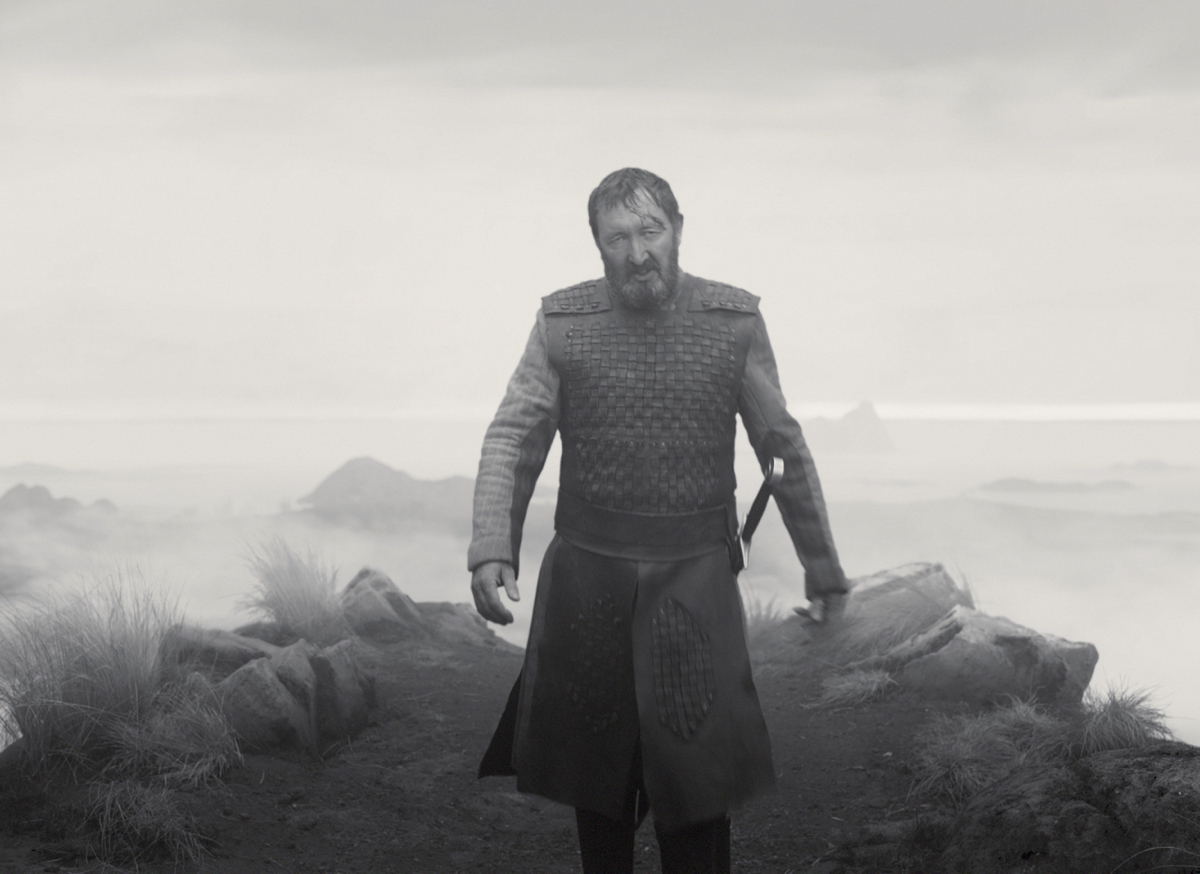
b&a: How did you go about building and animating the CG ravens?
Alex Lemke: We work with this German company a lot called BigHugFX. So we talked to them and said, ‘We’ve got a couple of 3D things, including these ravens. Would you like to work on that?’ And they were interested. And since they have a pretty good CG Houdini department, they did the apparition chamber, the wide shots of the water effects.
b&a: For the atmospherics, in that opening scene and elsewhere, were they elements or sims, or did it depend on the shots?
Michael Huber: It’s all elements.
Alex Lemke: If you look at our breakdown reel, I think there are four smoke elements featured. And I think for most of the film, we actually used only those four elements.
Michael Huber: Over and over again in a million different combinations. We made a pretty early decision between us that we were trying to stay away from smoke sims because it would just get very involved and complicated. And we were trying to see if it’s possible with the elements. So we did some tests and they worked really well.
Alex Lemke: I think it was also because it references old black and white film. We were trying to use techniques that were actually being used back then. This wasn’t a film where you have crazy camera moves through a volume or anything like that.
Michael Huber: As long as the camera is static or only moves slightly left and right, you get away with elements all the time.
b&a: There’s that really stark effect of the witches and the reflections. I know they’re probably ‘simple’ shots from a visual effects point of view. But I really want to talk about them because I feel like they’re like a direct translation from some sort of concept or idea.
Michael Huber: Well, there was this picture that Joel had, that I think it started with, where he showed us a picture of a girl standing on a pond and something was wrong with her reflection. And he loved the idea of that. That’s where it evolved from. Then they decided also that Kathryn Hunter would be playing all three witches. So it was like one performance that had to be multiplied on the pond because we needed three.
The question was, how do we get from this one witch with her altered reflection, to the three? That’s where the idea came up, that the one witch has two reflections, and then that creates the other two witches with a smoke transition. I don’t remember doing a lot of versions of it.
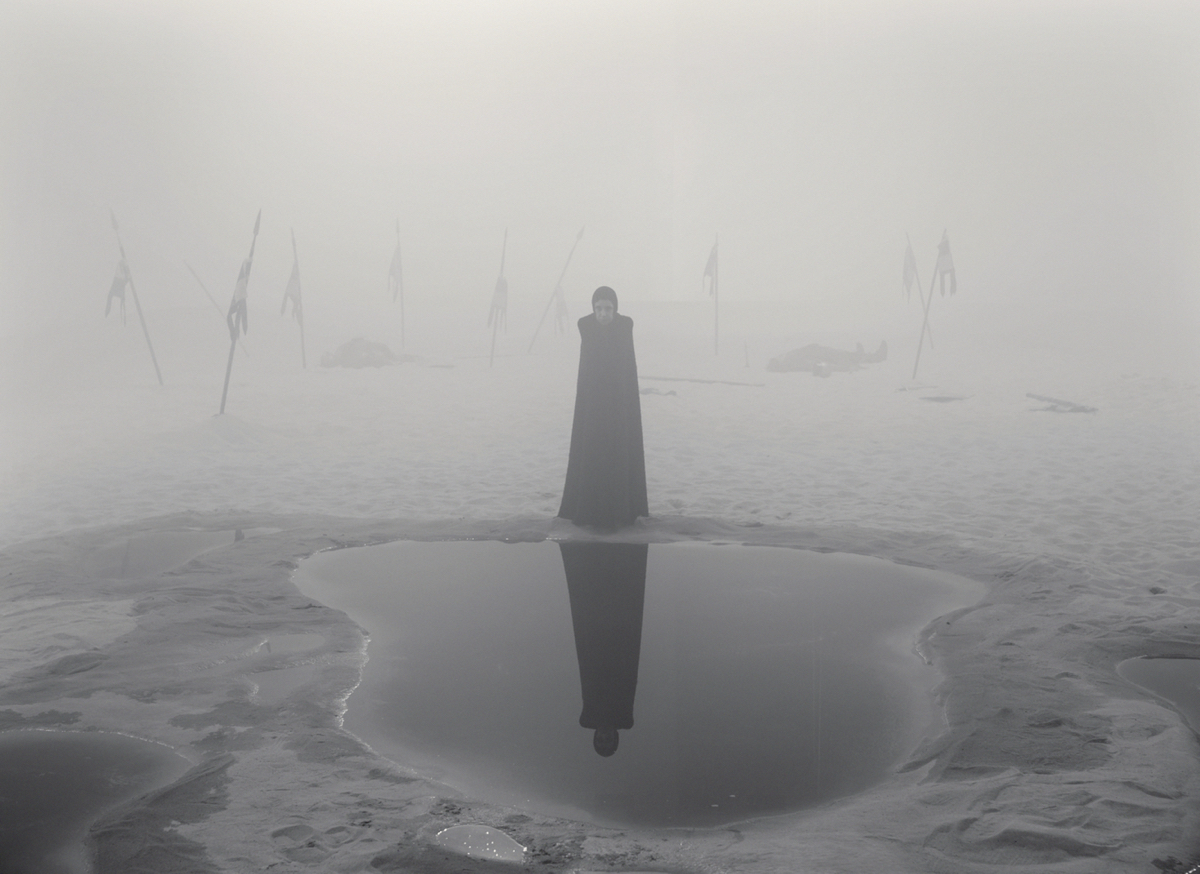


Alex Lemke: You did do some, because originally they weren’t sure how they wanted them to appear. I think they started out with just dissolving them.
Michael Huber: That’s right, and then once we went into the smoke idea, that was pretty much how it was done.
b&a: There were a lot of ‘architectural’ visual effects in the film, if I can describe it like that. Where, I would say, an audience member might have thought these sets were built. And of course, partial sets were built, clearly, but then you’ve extended them. What kind of challenges did that bring up?
Alex Lemke: The good thing was the shapes that were built and that Joel wanted were very simplified, so it was pretty straightforward for us to extend these. Most of the time, it’s just cubes and geometric shapes.



Michael Huber: I think that’s the biggest thing, that all the shapes were very straightforward, blocky shapes. There’s a few arches that we had to build, but it’s really fairly simple geometry. We had a big texture library because we were taking pictures all day long on set. We had access to the sets all the time, which was great. So we could just go in and take a lot of pictures And then we’d use these as textures later.
b&a: I was thinking, even the final confrontation between Macbeth and Macduff, how did you approach those rampart extensions?
Michael Huber: There was always the idea of the ramparts in the clouds. That was always there somehow as a basic idea, but for quite a while it wasn’t 100% clear what it was going to look like.



Alex Lemke: You’ve got this big rampart thing, and then the question was, what is on the A side, and what is on the B side? The production designer, Stefan Dechant, stepped in and did a lot of mockups. At one stage there was more complex geometry, maybe even a hint of sky. Joel would say, ‘No, no, tone it down, tone it down.’ So in the end, it was just this giant tower in the middle of nowhere, and the other side was just a wall extension. And that was all built in 3D.
Michael Huber: I think the rampart is a good example also of the simplicity of shapes. And I think it really helped with this that Joel wanted it to be as abstract as possible, to really focus on what’s going on with the actors. Nothing was supposed to be distracting from the action going on.
Alex Lemke: An interesting thing I might point out is that we did 400 shots, total, on the film. And Michael and I did half of the shots ourselves, everything, including all the matte paintings and CG extensions. We did have the luxury of an extended post production schedule, which was fantastic.



b&a: I don’t think most non-visual effects people will think this is a big deal at all, but that’s really interesting that you did so much of it between you. What did that mean in practise? Are you both using Nuke to do the work, or other tools?
Michael Huber: It’s Nuke, mostly, but we track in different software. Alex tracks in SynthEyes. I track in Equalizer! … and Mocha.
Alex Lemke: And we’re also doing 3D ourselves. We’d do some in Maya and Houdini, and I started to learn Blender on this production. It’s a fantastic piece of software. It’s great. I mean, all these set extensions, the CG parts are Blender.
Michael Huber: And a little bit of Maya in there too.
b&a: How were those apparition/water shots done, whether Macbeth is looking into the water? Because I think, again, if you didn’t know much about visual effects, you might just assume that Denzel was sitting in some kind of water set.
Michael Huber: Well, there’s one small set where he had his feet in the water, but in the wide shots, again, there was a lot of direction of what the water was supposed to do. So shooting this with real water on set would’ve been a nightmare. It was clear this had to be CG. This was done in collaboration with the guys in Germany at BigHugFX.
Alex Lemke: BigHugFX did the wide shots of the water in CG. All the close up shots, they were composites.
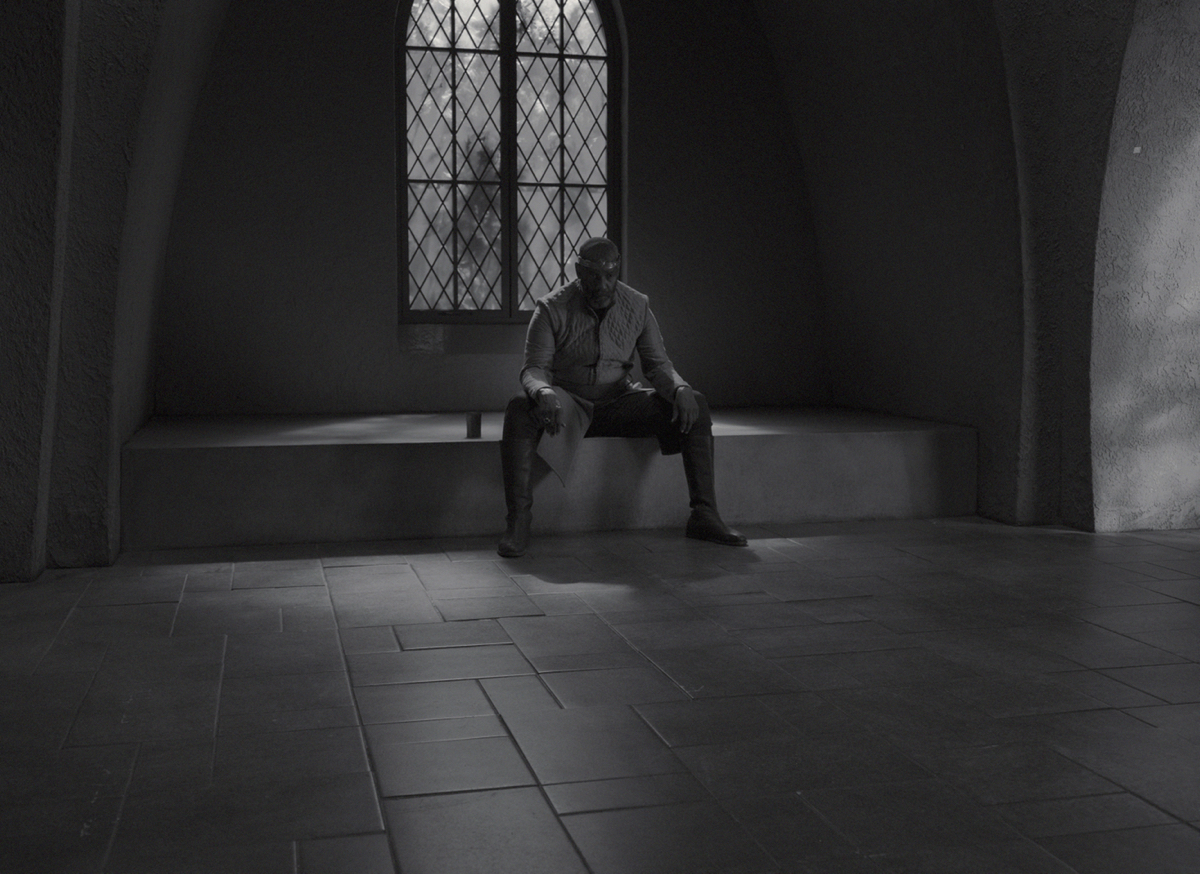


b&a: What was one of your favorite, or toughest shots, in the film?
Michael Huber: I spent quite a bit of time working on the throne room sequence, the fight in the throne room, with the trees outside. There was a lot of lookdev and figuring things out on that sequence.
b&a: The trees that are in the background, are they real, or what are they?
Michael Huber: We were experimenting with a lot of things, and the idea was to put actual trees in there. But then the longer we were on this movie, it became clear to us that it’s not about realism, it’s really about keeping that style that they already had established on set, even keeping a ‘2D backdrop’ kind of look for the whole thing.


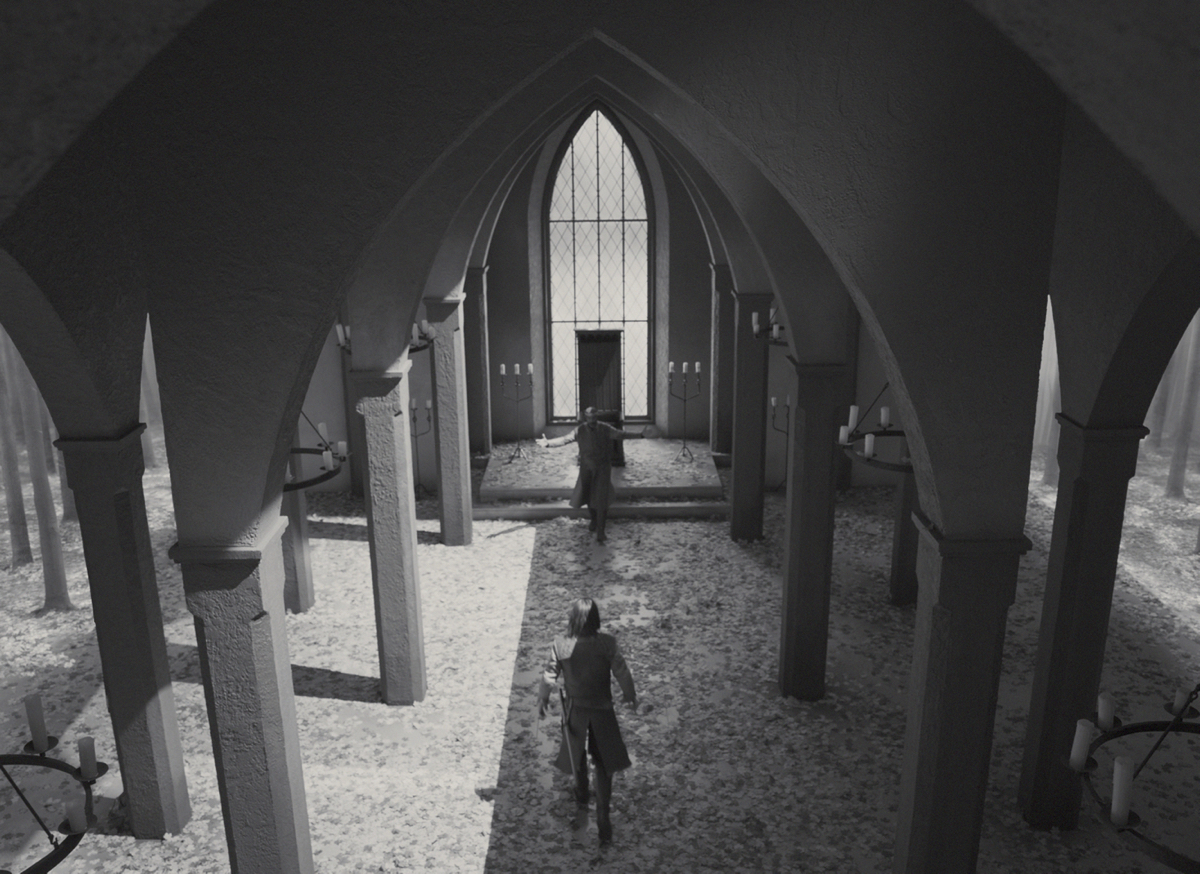
It’s a matte painting. It has a bunch of 2D cards of trees in the foreground in order to get some parallax when the camera is moving. But that is really it. We had some real trees in there in the beginning in some tests. But actually, it looked better without them. It looked more interesting and more fitting to the movie as a two-and-a-half-D comp situation.
Alex Lemke: For me, the final shot of the film was one of the biggest challenges. it was planned as a locked-off shot, and he’s riding down the hill and disappears behind the ridge. And then the birds come up, and we pan away with the birds. So that was all pretty clear. And Stefan did great artwork for it.
And then Bruno and Joel decided, ‘Well, it would be nice to have a camera move on it.’ And so, we started doing that. And then they said, ‘You know what we really need? This is supposed to be the Scottish Highlands, so it needs to have blowing grass.’
We didn’t really have the budget to make a full CG grass simulation. So what I did was temp out a shot using grass from The Ballad of Buster Scruggs, from the episode with Tom Waits, because I knew we had shot a tonne of grass plates there. So I picked out some, made a layout. And this is basically what’s in the film at the end. All the grass on the hill, that’s 2D elements that are just blended together. And then on top of that, you had all the birds flying away.
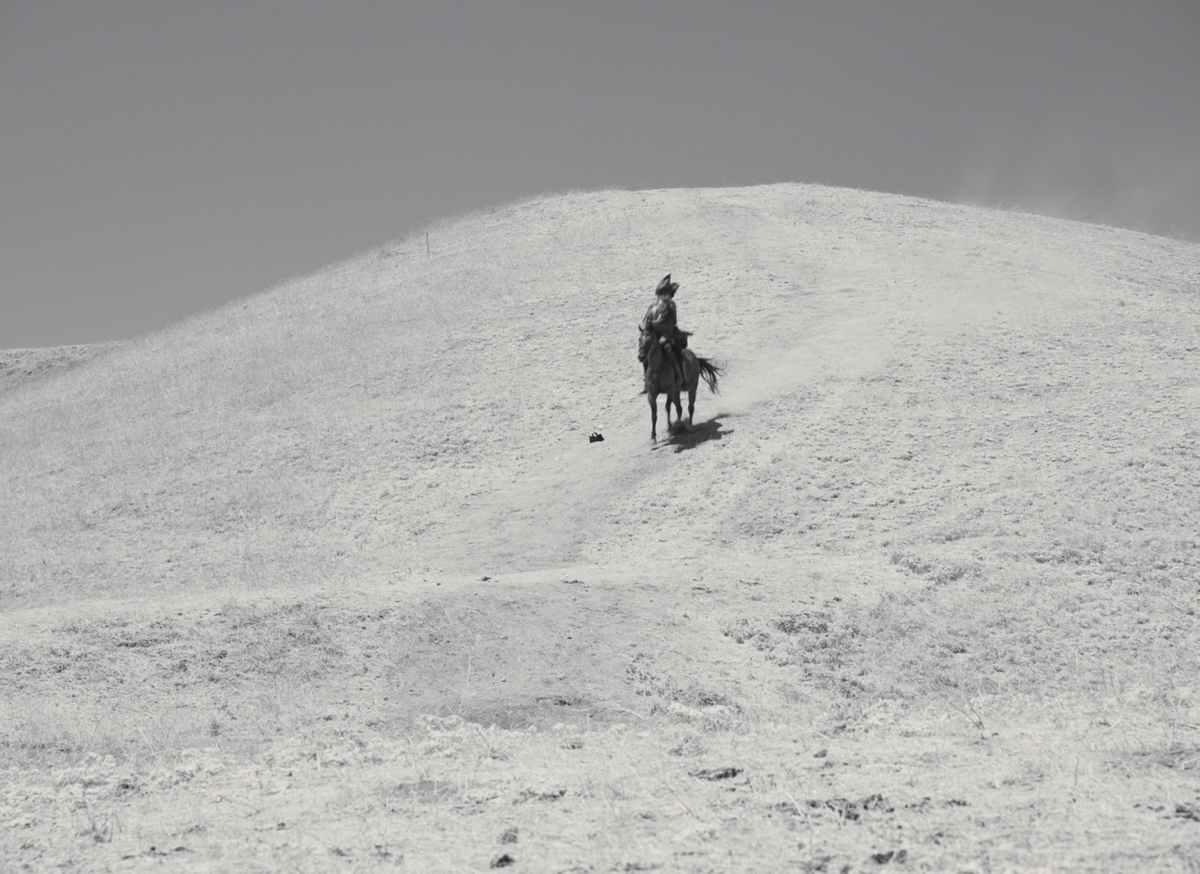

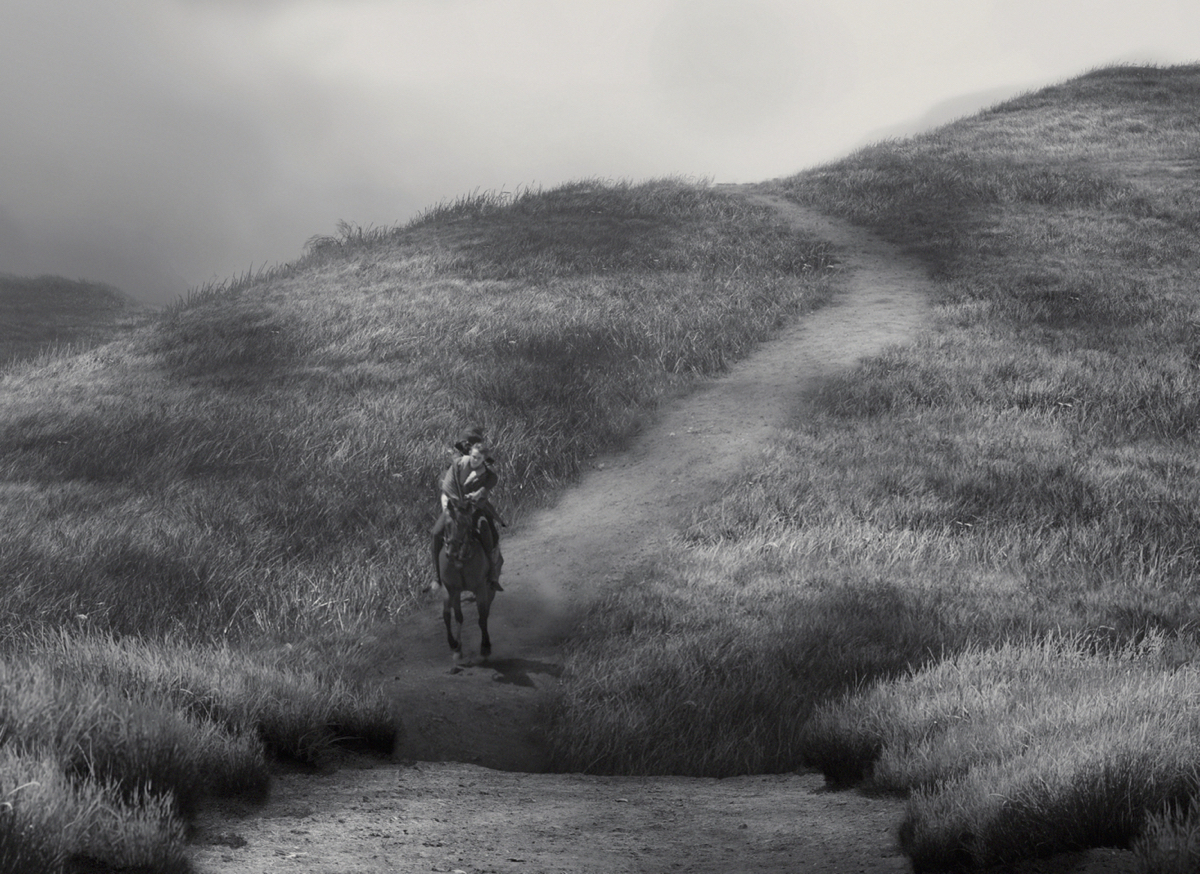
b&a: Oh wow.
Alex Lemke: Oh, I have one more shot to mention, the last shot when Macbeth gets decapitated. That was something we never planned for. Joel shot an element of the camera following the sword and then panning to the side, and then decided he wanted to pan up into the sky and see the crown flying away. Obviously, we never planned for that, but a good friend of mine has a 3D scanner. So we got the crown prop, he scanned it for me, and then I put this animation of the crown flying away and blended it all together.
b&a: I just thought it was a real crown being thrown.
Alex Lemke: No, it’s a Blender crown.
b&a: Wow. Oh, that’s very cool.
Michael Huber: You know, I think that happened a lot in this movie, that there were just ideas thrown out there. We would just try things and see what comes out of it.
Alex Lemke: I mean, the beauty of working with Joel is that he’s not one of those pixel fucking directors. If it’s good enough, it’s good enough.
Michael Huber: Yes, I think that Bruno and Joel, both of them–what they really care about is that it fits, that the whole movie fits together, visually. But they don’t dive deep into a visual effects shot and talk about effects-specific things. They’re not interested in that. They want it to look great and fit into the whole movie that they had shot on set.





















